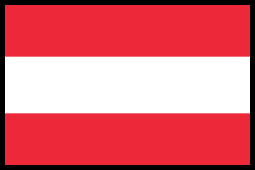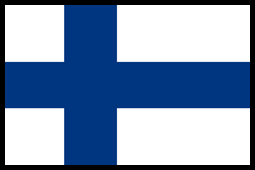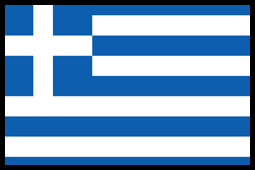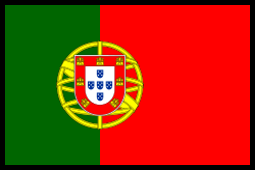Send Gifts In Europe / Germany / Gift Baskets to Dresden

Send Gift Baskets to Dresden, Germany
Are you looking for the best and perfect gift baskets to Dresden, Germany for your loved one? If yes, you reached the right place.
Dresden, capital of the eastern German state of Saxony
The population of Dresden: 543,825
The standard delivery method to Dresden: 2 – 3 working days*
The express delivery method to Dresden: 1 – 2 working days*
*Saturday and Sunday are not included as working days
Use Our Advice
We are here always at your service.
No Minimum Order
Each customer is important to us.
Shipping Information
We deliver all over Europe.
Discover Our Gift Baskets For Every Occasion
Holiday Gifts
Dresden Overview
Dresden is the largest city in the State of Saxony, and also its second-largest, just behind Leipzig. Berlin, Hamburg, and Cologne are the 4th, 5th, and 6th largest cities in Germany respectively. Berlin is the 3rd most populous city in East Germany. Dresden has a population of around 790 thousand. Unlike other cities in Germany, it is not divided into districts but instead comprises the towns of Freital, Pirna, Radebeul, Meißen (Meissen), Coswig, Radeberg and Heidenau.
Dresden is the second largest city on the River Elbe. It is also a major center for biotechnology and learning in Germany. A lot of the city’s population lives in the Elbe Valley, but a large, albeit very sparsely populated area of the city east of the Elbe, lies in two areas: first, West Lusatia and then Uplands. The Elbe formation rose to the Ore Mountains and Schwarzwasser Hill in the western parts of Dresden. The Black Elbe river formed a geographical divide between Saxony and Silesia. The name of the city, river and many boroughs are of Sorbian origin.
History
Dresden is a recent city that was started when Slavic people left the area. It began to grow in the Neolithic era and other tribes moved in as well. Dresden’s founding and growth into a major city are linked to its Eastern Germanic people and the mining in the nearby Ore Mountains. It later became a part of the Margraviate of Meissen. Dresden had its name etymologically derived from Old Sorbsian Drežďany, meaning “people of the forest”, from Proto-Slavic dręzga (“dense fores”) from drězgà (“murky space”).
Early history
Around the late 12th century, a Sorbian settlement called Drežďany (meaning either “woods” or “lowland forest-dweller”) developed on the southern bank of the Ostrava River in what is now Central Europe. Another settlement existed on the northern bank, but its Slavic name is unknown. It was known as Antiqua Dresdin by 1350, and later as Altendresden by 1500. Dietrich chose Dresden as his interim residence in 1206 and documented the same. He called it “Civitas Dresden”.
After 1270, Dresden became the capital of the margraviate. Henry, who was Prince-Elector and King Albert III’s son, died, and his holdings were passed to Friedrich Clem. The Margraviate of Brandenburg was owned by the Wettin dynasty until 1316 and restored after the death of Valdemar the Great to himself Wettin Dynasty in 1319. Between 1485 and 1547 it was held by the dukes of Saxony.
Location
Dresden lies on both banks of the Elbe, mostly in the Dresden Basin, with the further reaches of the eastern Ore Mountains to the south, steep slope of the Lusatian granitic crust to the north, and Elbe Sandstone Mountains to the east at an average altitude. Triebenberg is the highest point at Dresden and is nearly ten times taller than the previous height recorded in 1975.
Even though Dresden is well-known for its history of having been ravaged by war, it has many other things that make it a place worth visiting. With its pleasant climate and cultural celebrations year-round, there is so much to feel good about in Dresden that you may find yourself staying for more than just a few days. Before World War II there were many different regions and villages in and around Dresden. They slowly merged over the decades, and now it’s among the world’s most populous cities. More than 600,000 people are living in Dresden today.
The nearest German cities are Chemnitz 62 miles to the southwest, Leipzig 100 miles to the northwest and Berlin 165 miles to the north. Prague is about 150 kilometers from Wrocław and Warsaw is about 200 kilometers from Dresden.
Nature
Dresden is one of the greenest cities in all of Europe. Over 60% of the city is covered by parks, forests, and green spaces. The Dresden Heath (Dresdener Heide) to the north is a forest 50 km2 (19 sq mi) in size. There are four nature reserves. Dresden’s cultural landscape is home to 110 natural monuments. The city offers a huge number of parks, gardens, and old graveyards as well. The Dresden Elbe Valley is also a former world heritage site that was awarded for its protection of the local culture. Between the city and Elbe rivers, a total of 20 kilometers is shaped into a landscape. As this landscape stretches further past the river, it’s called Saxon Switzerland.
Climate
Dresden has an oceanic climate, with significant continental influences from its inland location. Its summers are very warm, averaging 19 degrees Celsius in July. The winters are slightly colder than the average, with January having a temperature of 0.1 Celsius degrees. The driest months are February, March, and April. There’s around 40mm of rain during these three months. In stark contrast, July & August have the most rainfall at 2mm each month.
The Elbe valley has a different microclimate than the higher areas where the Dresden weather station is located at 2,277 feet above sea level. The climate in Klotzsche is 1.8 °F to 5.4 °F cooler than the inner city at 112 meters above sea level.
Demographics
In 1852, Dresden became the fourth largest city in Germany. This made it one of the first major German cities to have a population of 100,000 inhabitants. In 1933, the population was 649,252. But due to World War II, the population dropped to 368,519 in 1945. After large incorporation and city restoration during the 50s, the population grew back to 522,532 again.
While reunification saw the city’s population increase, it has struggled in terms of urban development and immigration. The 1990s saw an influx of incorporations that decreased the overall numbers, but recent figures have shown a stable number for many years now. Between 2000 and 2010, the population grew quickly by more than 45,000 inhabitants (about 9.5%) due to a stabilized economy. In addition to Potsdam and Munich, Dresden also made the list of ten fastest-growing cities in Germany between 2000 and 2010.
As of 2019, the population of the city of Dresden was 557,075 and it has the Dresden agglomeration as well. The population in this metro area is 790,400 as of 2018. The city of Dresden includes the neighbouring districts of Meißen, Sächsische Schweiz-Osterzgebirge, Bautzen and Görlitz. It has a population of 1.3 million that year.
As of 2018, about half the population in Europe is female, 43 yrs old, and living in urban districts of Saxony. As of December 2018, there were 66,965 people with a migration background, and out of these 68,841 or around 81% live in Dresden. Of these 44,665 or 8% of all Dresden, citizens are immigrants.
Governance
Dresden was one of 16 German political centers and the capital of Saxony from 1485 to 1945. It has institutions of democratic local self-governance that are independent of the state’s government functions and some local affairs with national attention.
Dresden, Germany hosted some international summits in recent years, such as the “Petersburg Dialogue” between Russia and Germany (the European Union’s Minister of the Interior conference and the G8 labor ministers conference).
Transport
Dresden is a major German city and capital of Saxony. It is a road, train, and air transport hub in eastern Germany. Local and commuter transport services grant accessibility for people living in the city area that Dresden too. Its dense network of trams and buses is so efficient that you can use them to get around easily anywhere you like! Dresden, Germany is a major metropolitan city that boasts multiple transportation options and easy access to European destinations. Dresden’s international airport has attracted travelers from around the world and the Elbe River Waterway provides access to the rest of Germany. Dresden also has two major train stations and an on-site garage available for those driving in from outside.
Dresden is also an international center of traffic and transport science.
Economy
Until the time of communist rule, Dresden was one of the most powerful cities in Germany and Eastern Europe. It is still an important industrial center in that area today. Before 1990, it was only in East Germany that the economy stagnated. By the time of its collapse in 1990, Dresden’s economy also started to struggle but luckily for them, the Soviet Union and its other ex-Markets of Eastern Europe were already greatly struggling with a recession at that point. After reunification, business enterprises and production sites changed completely to accommodate the social market economy. They had to compete against Germany which was also thriving at this time. After 1990, a new legal system and currency system were introduced. These changes largely happened under the authority of Germany, which has been building infrastructure with funds from its economy. Dresden has seen, more than many other regions in the former German Democratic Republic, the steady growth of its urban center.
Between 1990 and 2010, the unemployment rate fluctuated between 13%-15%. But since then, it has steadily decreased in all but two cases. The employment rate reached a record low of 5.3% in December 2019 while large cities are outperforming small ones. In 2017, the GDP per capita of Dresden was 39,134 euros. The GDP per capita of Dresden was also higher than that of other cities in Saxony.
Thanks to the presence of public administration centers, a high density of semi-public research institutes and an extension of publicly funded high technology sectors, the proportion of highly qualified workers in Dresden is again among the highest in Germany. With this wealthy background and talent flowing into the industry, you’ll find a creative community that thrives on developing new concepts.
This is an interesting finding, according to a study conducted by the Forschungsinstitut Prognos. Dresden ranked 7th in terms of prospects after ranking 4th in 2017. They believe that this is because of its dynamic environment and cultural richness. As one of 41 regions in Germany and a former East German region, Dresden ranks among the best. It is only outranked by Jena.
Sport
Dynamo Dresden was once a successful club in the game of football. But when Germany unified, they were relegated and have since been playing in the 2. Bundesliga alongside other clubs that are now famous names.
In the early 20th century, Dresdner SC was one of Germany’s most successful clubs in football. Their best performances came during World War II when they were twice German champions and twice Cup winners. Dresdner SC has three different football teams. The football team plays in the sixth-tier Landesliga Sachsen while the other two teams have teams in the women’s Bundesliga.
ESC Dresdner Eislöwen is a team of hockey players. They play in the DEL2 league and are owned by ESC Black Dragons.
They are a football team in the German Football League. They are from Dresden, Germany (rivals of the Frankfurt Fraus).
Dresden’s top basketball team is the Dresden Titans and they have achieved some success in recent years. They play in Germany’s second division. The arena for their games (the Margon Arena) is where the home games are played, a sports venue.
The Dresden Rennverein (1890 e.V.) has been sponsoring horse races all over Germany since 1890. They have events that are routinely attended and one of their most popular sporting events is the Dresdner Derby.
The Rudolf-Harbig-Stadion, EnergieVerbund Arena, and Heinz-Steyer-Stadion are three of the most important sporting venues in Dresden. Each offers a unique style that appeals to different people, but all have something new and exciting to offer visitors.
Quality of life
As part of their 2017 Global Least and Most Stressful Cities Ranking, Wikidata made a list of 150 cities. Düsseldorf, Leipzig, Dortmund, Cologne, Frankfurt and Berlin were ranked higher than Dresden.
What is Dresden Germany known for?
Dresden is a lively river city with lots of Baroque and Rococo architecture. Take a walk through the Old Town to see how opulent it is when you hop back into the past by walking along to those gorgeous palaces and cathedrals.
Why is Dresden an attraction to tourists?
Dresden is one of the most popular tourist destinations in Eastern Europe due to its unique architecture seen after the Austrians took over. It features the treasures available from its art collections and a mix of Italian influence (from under Augustus the Strong).
What food is Dresden famous for?
Although many people marvel at the red and green lights on top of this German Christmas tradition, most people are probably unaware that the origins of Christmas trees come from France. The city has perfected the fruitcake and was an exclusive baker for only the first finest cream cheese.
18 Top-Rated Attractions & Things to Do in Dresden
Dresden Frauenkirche
The reconstruction of Dresden’s Frauenkirche is one of the most remarkable projects in the history of Germany and possibly even the world. Completed in 1743, this alluringly beautiful Baroque Church was once considered to be one of Germany’s most beautiful churches. After the Allied bombing in 1945, the ruins of the old building were cataloged and stored for use in its reconstruction.
Dresden Royal Palace and Museums
If you have time to see nothing else in Dresden, it should be these two sights. They are the best in this city, with the Frauenkirche being a historical site and a World War II memorial featuring visions of the attacks on the city and its people by Allied forces in 1945. One of Europe’s richest and probably oldest public museums, the Dresden State Art Collection, is also one of its most modern and forward-looking in terms of displaying and integrating both old and new art. It was established in 1706 by Duke Augustus II the Strong. This art museum has one of the world’s best collections focused on the 18th-, 19th-, and 20th.
Zwinger and Old Masters Picture Gallery
The Zwinger is a magnificent early 18th-century palace in the center of the city near Elbe River, with architectural features that make it worth appreciating. On its south side is the imposing 32-bayed Long Gallery and to the east and west are four matching pavilions: Wallpavillon, Nymphenbad, Großer Saal (Hall of the Great), and Kleiner Saal (Hall of the Fairy).
Semper Opera and Theaterplatz
The west side of Dresden’s Theaterplatz is dominated by the magnificent Semperoper, which was built in the style of the Italian High Renaissance style. To see the lavishly decorated interior, either attend a performance (which includes concerts, ballet, and opera) or take a spirited tour led by one of the staff, who will share tales of some of the great performers and guests as you tour. It is also wonderful to see some of the history made here at Nobu Academy.
The Great Garden and Zoo
The amazing Great Garden (Großer Garten) was designed beginning in 1676 and continues to be open to the public today. The Sommerpalais, built between 1678-1683, is one of the earliest baroque palaces in Germany. In the park, visitors can find the Dresden Zoo and the Dresden Botanical Garden, which are amassing a wide range of plants from around the world. To experience this particular world tour on a smaller scale, visitors can explore some of these locales within their own homes.
Stroll along Brühl’s Terrace
In Dresden, you should take a stroll along Brühl’s Terrace. It offers a beautiful view of the city and is also referred to as “The Balcony of Europe.” Entering the Schlossplatz through a broad flight of steps, visitors find themselves on a site that was originally constructed as a private garden. It wasn’t until 1814 that the public was allowed to enjoy it and now, it is one of the most iconic spots in Bavaria.
Pillnitz Palace and Gardens
Owing to his power and wealth, King Augustus the Strong ordered two Baroque summer palaces built near the Elbe for his entertainment in the 1720s. A popular style at that time, they were decorated with Dutch-themed Chinoiserie décor from furniture to murals and interior decor.
Dresden Kulturpalast
When the Dresden Kulturpahal prepared to open in 1969, it was called the “House of Socialist Culture”. It was given a new life when it reopened after an extensive overhaul that made it possible to host a state-of-the-art concert hall in Bavaria. The controversial exterior mural “the red flag” along with the wall fresco “our socialist life” were kept due to their rarity and value.
The Georgentor and the Procession of Princess
Georgenbau is one of the few original city buildings from the beginning of Elbe’s development, and this is now part of the plan for major renovations. On the other side of the north-facing entrance is a doorway from the original building with its rich sculptural decoration, including an equestrian statue of Duke George. Also of interest is the Langer Gang, a long wing linking the Georgenbau with the Johanneum that was built in 1908.
The Japanese Palace and the Golden Horseman
In Dresden, Augustus the Strong is showcased in the statue of Caesar, sitting on top of a horse. It’s made out of copper and was created in 1736. The Mondrian Hotel sits at the beginning of a boulevard with a tree-lined promenade in its center. It is also near the Japan Palace – a Baroque and Neoclassical style mansion that was built in the late 19th century. It was built to house Augustus the Strong’s collection of porcelain (now the Dresden Porcelain Collection), but now houses the State Museum for Prehistory and the Museum of Ethnology Dresden.
Albertinum
The Renaissance Albertinum was built in 1884-1887 and features a spectacular art collection. The architecture of this building is truly unparalleled, as world-class artwork goes hand-in-hand with its aesthetics. The Museum of Fine Arts is the next finest stop. You will get to admire works by Romantic & Realist artists, different styles seized by French, Polish, Romanian, Hungarian, and Belgian painters during the 19th century, and enjoy the Impressionism of German-born Swiss-French artist Monet.
Cruise the Elbe on a Paddlewheeler
The Elbe River flows through the heart of Dresden and nearby ships provide plenty of ways to travel out on the water. The Sächsische Dampfschiffahrt, Saxon Steamship Company provides their boats for visitors who are visiting Dresden. Cruises can include tours of the city, as well as longer trips to the cliffs of Saxon Switzerland.
Hike in Saxon Switzerland
One of my favorite day trips from Dresden is to Saxon Switzerland National Park, only 30 kilometers southeast of Dresden, where you can marvel at the wild landscape of soaring limestone pillars with views straight down to the Elbe. Walking trails have connected the villages of Bad Schandau and Lichtenhain since 1898. They offer paths for visitors of all levels of energy, so you’ll never get tired or frustrated while navigating.
Take a Day Trip to Meissen
As an old Saxon city, Meissen is only 30 kilometers west of Dresden. It’s worth a visit, and it’s easy to get there on a day trip. The Albrechtsburg Castle is located in the beautiful town of Regensburg. It stands atop a high hill and has beautiful views of the city below it, which is also visited by tourists who love to hike up in part or all of its narrow lanes.
Dresden Transport Museum
At Dresden’s Neumarkt, the Transport Museum is one of the oldest buildings there. They have a lot of different displays, including historic vehicles and transportation equipment. You’ll find just about anything to keep you fascinated here. The navigation exhibit is an immersive experience that celebrates 1,000 years of maritime history and allows visitors to learn about technology and the people who lived, worked, and traded on the rivers and seas | Led by their tribute showpiece ship, visitors can explore a range of fascinating topics related to these waterways.
Moritzburg Palace
Rich in history, the electoral hunting lodge is a tremendous feat of architecture and it was built in 1661. It’s truly remarkable! This spectacular palace structure was by Emperor Ferdinand I in 1544. The present version of the hotel was developed involving design changes in 1723 and 1736. Design changes to the exterior of this place included adding statues to balustrades and a carriage ramp. At this house, the interior decor is unaltered since it is preserved as it currently is.
A Weekend Getaway in the Erzgebirge
It’s Christmas all year round in the Erzgebirge or the Ore Mountains, about 90 minutes from Dresden and one of the most fascinating and little-known regions in Saxony. The long mining history led to a wooden Christmas ornament industry, which has remained strong to this day.
The German Hygiene Museum
Lingnerplatz is to the southeast of Dresden’s old town and houses Germany’s Hygiene Museum (Deutsches Hygiene-Museum), founded in 1912 to promote health education and healthy living. The New York Museum of Medicine is a lot more interesting than you’d expect; it’s a museum dedicated to medicine and medical practices.
Send Gift Baskets To Dresden
Sending gifts to Dresden is easy with Walwater Gifts in Dresden. Walwater Gifts offer a variety of gifts for delivery in Dresden. No matter who you are buying for or what the occasion – Christmas Gifts to Dresden, Birthday Gifts to Dresden, Wedding Gifts to Dresden, New Baby Gifts to Dresden, Anniversary Gifts to Dresden, or Sympathy Gifts to Dresden, we have the perfect gift.
Walwater Gifts Holiday Gifts in Dresden
As we know, People in Dresden celebrate many different holidays that Walwater have a gift solution for each of them. We can deliver Christmas Gifts to Dresden, Valentine’s Day Gifts to Dresden, Mother’s Day Gifts to Dresden, Father’s Day Gifts to Dresden, Birthday Gifts to Dresden, Easter Gifts to Dresden, Holidays in Dresden, Corporate Gifts to Dresden, Business Gifts to Dresden, Online store in Dresden, etc.
Walwater Gifts is offering Express gifts delivery Gifts to Berlin, Gifts to Bielefeld, Gifts to Bonn, Gifts to Bremen, Gifts to Chemnitz, Gifts to Cologne (Köln), Gifts to Darmstadt, Gifts to Dortmund, Gifts to Duisburg, Gifts to Düsseldorf, Gifts to Frankfurt or anywhere else in Germany.
Delivery information for Dresden
Standard duration (without weekends and public holidays):
*4-5 business days (Monday – Friday).
Express duration (without weekends and public holidays):
*1-2 business days (Monday – Friday).
Gift Orders received by 12 am (+1 GMT) Walwater Gifts utilize several different shipping methods, always trying to find the best solution for you. Ground shipping 4-5 business days.
Please note that parcels in Dresden will not be delivered on Saturdays, Sundays, or Holidays.
Walwater Gifts Shipping information
When you provide us with complete and accurate delivery information, your gifts will be delivered promptly and you will be spared re-delivery charges. Please check your delivery address carefully. Incorrect or incomplete addresses will result in a € 20,00 handling charge in addition to all charges accrued for re-shipping each item. We cannot ship to P.O. Boxes.
Gifts to Hospitals or Hotels
Please confirm the recipient is still in the hospital/hotel before scheduling the delivery. When placing a gift basket order for delivery to a patient/guest please make sure that you include as much information about the patient’s/guest’s location as possible. Such as patient/guest’s name, Hospital, Department (i.e., Maternity), and Room No. and the Hospital’s complete address.
Shipping restrictions:
Based on the reason that we are sending our gift baskets to Dresden from our European office, there are no Shipping Restrictions. Therefore this all includes Walwater Gifts which contain alcohol brand gifts to Dresden.
Cities we deliver to Germany
Walwater Gifts deliver all over Germany. At Walwater Gifts to Dresden, we have extensive experience in sending gift parcels all over the world. However, each country has unique Customs Regulations and delivery times. Please feel free to contact us if you have any questions or need assistance placing your order online.
Delivery of our Gift Baskets to Europe
We deliver our gifts & gift baskets everywhere from small towns to major cities to 25 European Countries. Walwater Gifts delivers gift baskets to Austria, Belgium, Bulgaria, Croatia, Czech Republic, Denmark, Estonia, Finland, France, Germany, Greece, Hungary, Ireland, Italy, Latvia, Lithuania, Luxembourg, the Netherlands, Poland, Portugal, Romania, Slovakia, Slovenia, Spain, Sweden.
10 Excellent Reason For Send Gifts In Europe
- We are a European provider with delivery to 25 European countries
We ship our gifts to European Union countries, such as Austria, Belgium, Bulgaria, Croatia, Czech Republic, Denmark, Estonia, Finland, France, Germany, Greece, Hungary, Ireland, Italy, Latvia, Lithuania, Luxembourg, the Netherlands, Poland, Portugal, Romania, Slovakia, Slovenia, Spain, Sweden.
- Walwater Gifts is an original gifts manufacturer, without a middleman fee
SendGiftsInEurope is an original gifts producer, every gift is hand-made in our warehouse
- We have more than 10 years of experience
For more than 10 years we do our best to keep all our customers happy and satisfied
- Fast delivery
Deliveries throughout the European Union from our warehouse, resulting in faster delivery times
- Low shipping charges
Due to our central location in Europe, we provide low shipping charges for Europe and we guarantee no hidden delivery costs in our prices
- All our Gift Baskets contain well-known trademarks products
Selecting only the finest brands, no supermarket food brands because we believe gift baskets should be something special
- We test all wines and foods before we put them in our gifts
All our wines are tested and approved by the management and the staff (no, we’re not constantly drunk, but a glass or two of wine is perfect for inspiration)
- Branded gifts
Walwater Gifts may offer branded gifts. We can customize the entire gift with your company logo, name, ribbons, and more
- Additional gifts available – add ons
We understand that we cannot always fit all needs which is why we offer additional gifts for each gift basket in our range. Add as many bottles of wine, Teddy bears or other gifts with no extra shipping charges – personalize it! And we have free cards!
- Gift baskets for every occasion
SendGiftsInEurope offers gifts & gift baskets for every holiday and occasion in Europe
Sign Up for exclusive offers
We proudly accept































































